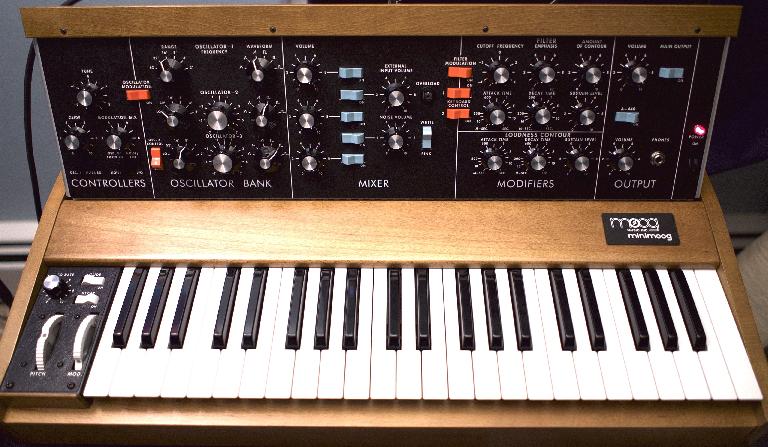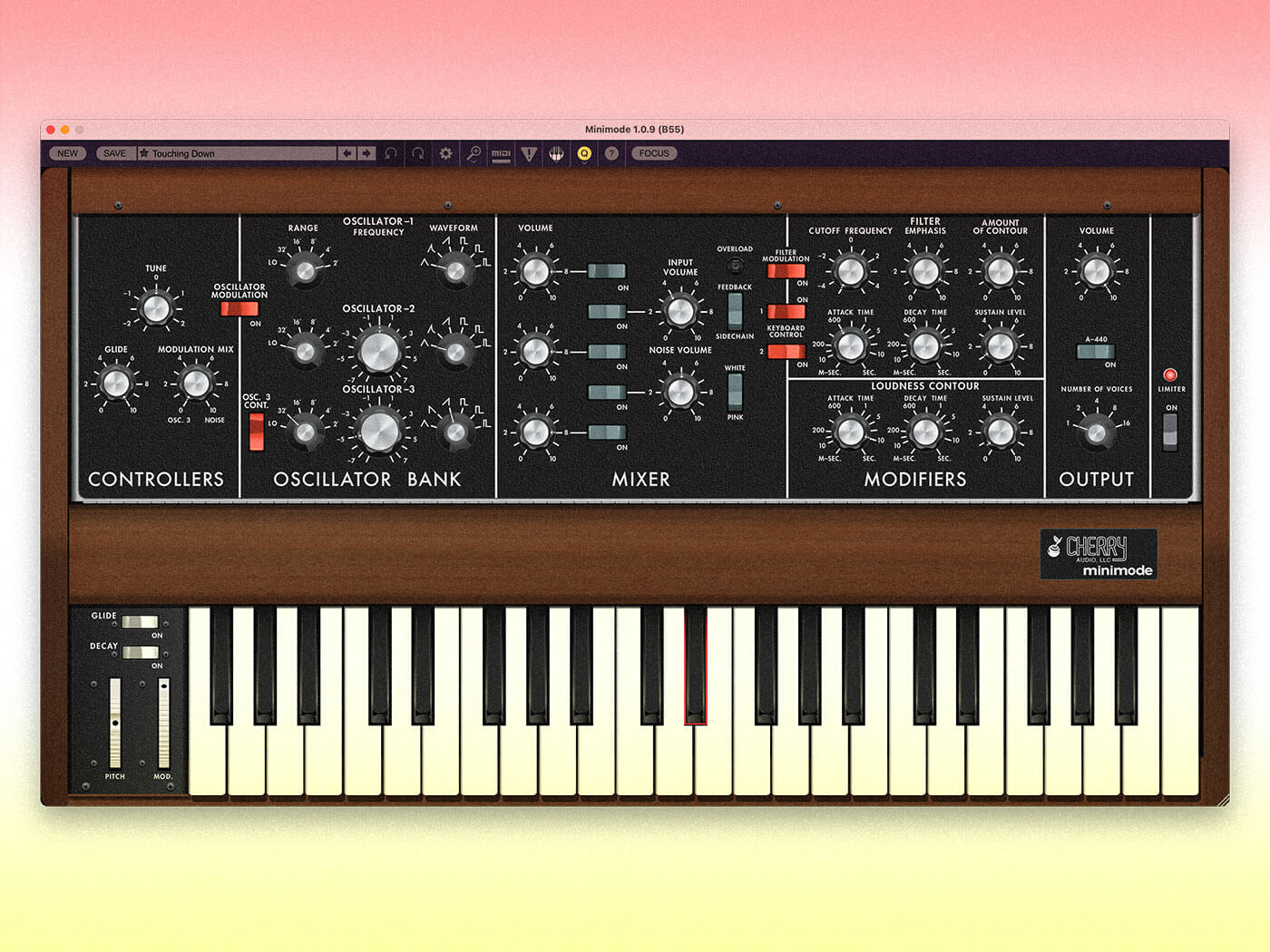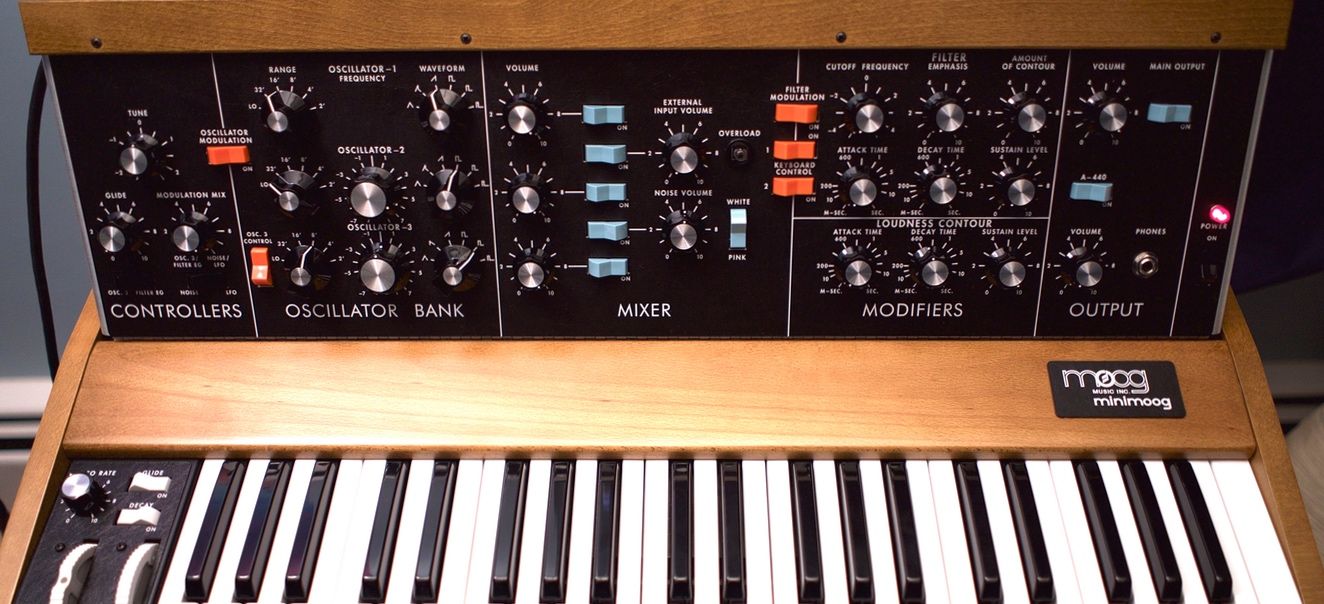The Minimoog Model D is a highly regarded analog synthesizer that offers exceptional sound quality and performance capabilities. This legendary synthesizer is a must-have for any serious musician or producer looking to create authentic vintage synth sounds with modern features and reliability.
With its iconic design and unique sound, the Minimoog Model D has become a favorite among music professionals and enthusiasts alike. Whether you’re looking to experiment with new sounds or recreate classic analog synths from the past, the Minimoog Model D is an excellent choice.
In this review, we’ll explore its features, sound quality, and overall performance to help you determine if it’s the right synthesizer for your needs. Let’s dive in!
Design And Features
The Minimoog Model D is an iconic synthesizer renowned for its design and features. It boasts a compact size, easy-to-use interface, and unparalleled sound quality, making it a favorite of musicians and producers worldwide. With classic analog circuitry and modern updates, the Minimoog Model D continues to be the go-to synthesizer for creating unique, cutting-edge sounds.
Design and Features When it comes to synthesizers, the Minimoog Model D is a legendary instrument that has been used by many musicians for decades. The combination of its sound and design has made it a classic in the world of music. In this review, we’re going to focus on the design and features of the Minimoog Model D. Physical design of Minimoog Model D The physical design of the Minimoog Model D is a classic looking synthesizer that is instantly recognizable. The keyboard is made up of 44 keys and has a pitch and modulation wheel above it. The body of the synthesizer is made of aluminum and has wood panels on the sides that give it a classic yet modern look. Hardware components The Minimoog Model D has some of the most advanced and high-quality hardware components you’ll find in a synthesizer. The oscillators, filters, and modulators are completely analog and provide a rich sound that is unique to the Minimoog. All of the knobs and switches are high-quality and have a smooth feel to them. Usage of voltage-controlled oscillators (VCOs) The Minimoog Model D uses three voltage-controlled oscillators (VCOs) that are capable of producing a wide range of sounds. Each oscillator can be adjusted to produce a different frequency and waveform, allowing you to create complex and unique sounds. The VCOs also have a sync option that allows them to be synced together to create even more interesting sounds. Filter and modulation options The Minimoog Model D has an impressive filter section that includes a low-pass filter, high-pass filter, and band-pass filter. These filters can be adjusted to create different types of sounds, which are perfect for creating unique sounds. The modulation options include an LFO, an envelope generator, and a noise generator. These options provide you with even more ways to create complex and unique sounds. In conclusion, the Minimoog Model D is a classic synthesizer that has stood the test of time. Its physical design is timeless, and its hardware components are some of the most advanced you’ll find in a synthesizer. The usage of voltage-controlled oscillators and the filter and modulation options make it an instrument that is perfect for creating complex and unique sounds.

Credit: www.macprovideo.com
Sound
The Minimoog Model D is a legendary analog synth that has been around for over 40 years. What sets this synth apart is its sound quality and its ability to produce a wide range of tones. The Model D has been used by some of the greatest musicians of all time, and its influence can be heard in countless recordings. Let’s take a closer look at the sound of the Minimoog Model D.
Exploration Of Minimoog Model D’s Sound Possibilities
One of the most remarkable features of the Minimoog Model D is its versatility when it comes to sound. This synth can produce everything from warm, fat basslines to bright, cutting leads. The Model D features three oscillators that can be tuned individually or linked together to create complex sounds. It also has a wide range of filters and modulation options that allow for endless possibilities. With the Model D, you can achieve classic Moog sounds, but also experiment with new, unique sounds.
Analysis Of Sound Quality
When it comes to sound quality, the Minimoog Model D is second to none. The oscillators produce rich, warm tones that are full of character. The filters are well-designed and add depth to the sound, while the modulation options allow for creative expression. The Model D’s sound is raw and organic, with each note feeling alive and vibrant. Whether you’re using it for basslines, leads, or pads, the Model D’s sound quality is unmatched.
Comparison To Other Analog Synths
The Minimoog Model D stands tall among other analog synths. While there are many great synths on the market, few can match the sound quality and versatility of the Model D. Its rich, warm tones and endless sound possibilities make it a favorite among musicians and producers. Additionally, the Model D’s build quality is exceptional, ensuring that it will last for years to come. When it comes to analog synths, the Minimoog Model D is simply the best.
Performance And Usability
This Minimoog Model D review covers both performance and usability of the synthesizer. With its classic sound and intuitive interface, this analog synthesizer is a favorite among musicians and producers.
The Minimoog Model D is one of the most iconic and sought-after analog synthesizers in music history, known for its warm and rich sound as well as its intuitive and user-friendly interface. In this review, we’ll dive deeper into the performance and usability aspects of the Model D, exploring its ease of use, portability and practicality for live performances, and integration with external gear.
Ease Of Use
One of the standout features of the Minimoog Model D is its ease of use. Despite its complex and powerful sound engine, the Model D has a simple and straightforward layout that even beginners can understand. The front panel is divided into three main sections – oscillators, mixer/filter, and modulation – each with its own set of knobs and switches. Thanks to this intuitive design, you can quickly and easily dial in any sound you want without getting lost in menus or submenus.
Portability And Practicality For Live Performances
Another great advantage of the Minimoog Model D is its portability and practicality for live performances. The Model D is housed in a sleek and compact case that makes it easy to transport to gigs or rehearsals. Additionally, it doesn’t require any external speakers or amplifiers, as it features an internal speaker that can fill small venues with its powerful and distinctive sound. The Model D also has a built-in arpeggiator, making it ideal for creating live performances that are both spontaneous and captivating.
Integration With External Gear
Lastly, the Minimoog Model D is an excellent choice for musicians who want to integrate their synth with external gear. The Model D features a range of inputs and outputs, including CV, gate, and MIDI, making it compatible with a wide range of other synthesizers, drum machines, and sequencers. This means you can use the Model D as the centerpiece of a larger electronic music setup, unlocking even more creative possibilities and expressions. In conclusion, the Minimoog Model D is a powerful and versatile synthesizer that excels in both performance and usability. It is easy to use, portable, and practical for live performances, and integrates seamlessly with external gear. Whether you’re a seasoned synthesizer player or just starting out, the Minimoog Model D is a must-have instrument that can transform your sound.

Credit: musictech.com
Legacy And Impact
The Minimoog Model D is a legendary synthesizer that has had a lasting legacy and impact in the world of music. Its unique sound and design revolutionized electronic music making with its analog technology. Even today, it continues to be a vital tool for musicians and producers around the world due to its distinctive sound and versatility.
Legacy and Impact When it comes to the evolution of synthesizers, the Minimoog Model D is a legend. Released in 1970, the synthesizer quickly became a significant player in electronic music history. Its sound became a staple in genres like progressive rock, funk, and even punk rock. Its legacy still lives on today, with modern recreations and variations available for music enthusiasts. In this section, we will explore the cultural significance of the Minimoog Model D, its influence on the synthesizer design, and the modern versions that continue to shape the music industry. Cultural Significance in Electronic Music History The Minimoog Model D played a critical role in the electronic music industry during the 1970s. Its sound became synonymous with even the most popular rock and funk tracks. This was mainly because of its unique, fat, and warm-sounding filters and oscillators, which added a new dimension to music production. The Model D’s impact on electronic music cannot be understated, and it remains one of the most important and iconic synthesizers ever made. Influence on Synthesizer Design The Minimoog Model D was the first synthesizer ever to incorporate an intuitive, performance-oriented layout. It had three oscillators, a dual-mode filter, and a straightforward envelope generator. This made it a powerful tool for musicians looking for an innovative way to create music. Its unique design influenced many synthesizers that came after it. Manufacturers began adopting its layout, and soon, most synthesizers featured similar designs. Today, you can spot its influence on synthesizers, whether in the filters or the envelope generators. Modern Recreations and Variations The Minimoog Model D was a limited run keyboard, and the original units have become incredibly rare and valuable. Fortunately, in recent years, newer versions self-contained units that combine the original synthesis engine with modern programming have emerged. These modern versions ensure that the Minimoog Model D’s sound and legacy still live on today. The Model D is produced in software, such as the Arturia Minimoog or Hardware form, like the Behringer Model D. They deliver the same sound characteristics and are built with modern workflows, allowing musicians to create music at their own pace while still staying true to the original sound of the Minimoog Model D. In conclusion, the Minimoog Model D’s legacy extends beyond its time, and its impact on the synthesizer design continues to shape music production today. The synthesizer is an icon, and its influence will be felt for generations.

Credit: www.macprovideo.com
Frequently Asked Questions Of Minimoog Model D Review
Why Was The Minimoog Discontinued?
The Minimoog was discontinued due to the introduction of cheaper and more advanced synthesizers, as well as the death of its inventor in 1984. The rise of digital technology also contributed to its decline.
Is The Behringer Model D Good?
Yes, the Behringer Model D is a great analog synthesizer that emulates the classic Minimoog. It offers an affordable price point without sacrificing sound quality and features. Its compact size and MIDI implementation make it a versatile addition to any studio or live performance setup.
What Is The Best Minimoog Vst?
The Arturia Minimoog V is considered the best Minimoog VST because of its faithful reproduction of the original synth’s sound and features, including its filters, modulation options, and intuitive interface. It also offers additional features not found on the original Minimoog, making it a versatile and powerful tool for music production.
What Is The Difference Between Moog Model D 2016 And 2022?
The Moog Model D 2022 features a new software update with improved tuning stability and MIDI functionality, as well as a new look with white, backlit knobs. The Moog Model D 2016 is the original version released in 2016.
Conclusion
The Minimoog Model D is an iconic synthesizer known for its warm and fat sound. It is a classic piece of equipment that has been used in countless hit songs over the years. The Model D is a true analog instrument that delivers a unique sound that cannot be replicated with digital technology.
Whether you’re a professional musician or a beginner, the Model D is a great investment that will continue to provide inspiration and creative opportunities for years to come. So, if you’re looking to add a touch of analog warmth to your music, the Minimoog Model D is definitely worth checking out.